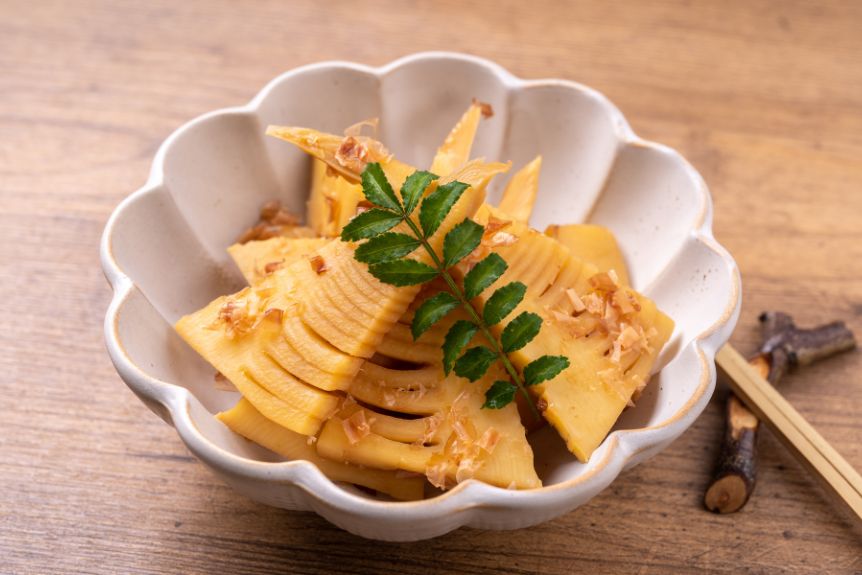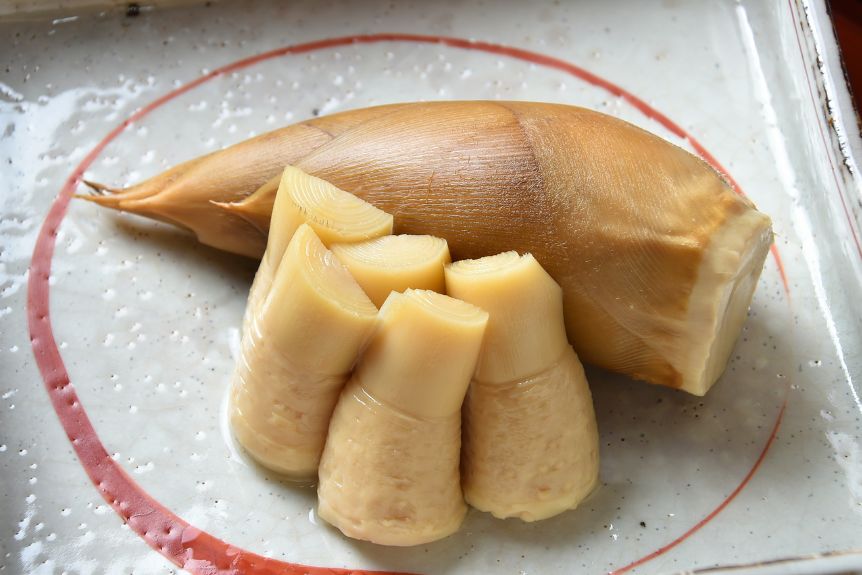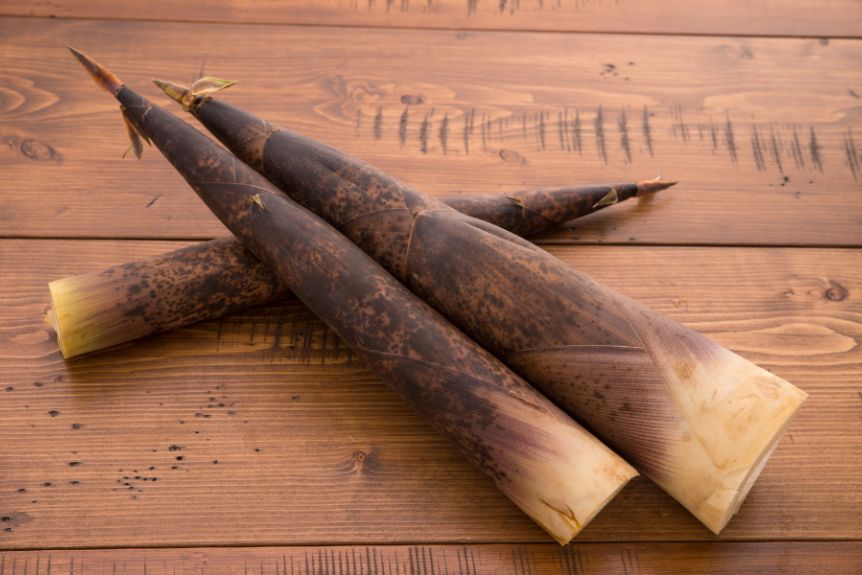Welcome to the fascinating world of Japanese bamboo shoots, also known as takenoko! These unassuming little wonders hold a special place in Japanese cuisine and culture, and today, we’re diving deep to uncover all their secrets.
From their incredible versatility in the kitchen to their important role in sustainable farming practices, takenoko has a lot to offer. So, let’s peel back the layers and reveal the captivating tales behind these delicate shoots.
Prepare to be wowed by their nutritional perks, how they jazz up everyday dishes, and their profound significance in Japanese culture and beyond. Join us on this culinary journey where we explore how takenoko brings together taste and sustainability, and witness the magic unfold right before your eyes.
Culinary Delights
Japanese bamboo shoots, known as ‘takenoko’ in Japan, offer a versatile and nutritious addition to a myriad of dishes, enhancing flavors and textures in culinary creations. You have the power to elevate your cooking by incorporating these tender shoots into your recipes.
Whether you’re simmering them in a savory broth, stir-frying with crisp vegetables, or incorporating them into a refreshing salad, takenoko adapts to your culinary vision, absorbing the surrounding flavors while maintaining its unique texture.
You control the outcome of your dishes when you decide to use takenoko. Its subtle taste doesn’t overpower but rather complements the primary ingredients, allowing you to craft a balanced and harmonious meal.
Experiment with it in traditional Japanese recipes like bamboo shoot rice (takenoko gohan) or add it to your favorite soup for an extra layer of texture.


Traditional Recipes
Delving into traditional recipes reveals the cultural significance and versatility of takenoko, allowing you to explore a rich tapestry of flavors and culinary techniques. By mastering these recipes, you’re not just cooking; you’re taking control of a culinary tradition that has been passed down through generations.
Begin with Takenoko Gohan, a simple yet flavorful bamboo shoot rice. You’ll need to perfectly cook rice with fresh Japanese bamboo shoots, seasoning it with dashi, soy sauce, and mirin.
The precision in measurements and timing isn’t just recommended; it’s essential for the authentic taste you’re aiming for.
Next, tackle Takenoko no Tosani, where bamboo shoots are simmered in a mixture of dashi, soy sauce, and sugar. This dish demands your attention to detail, ensuring the bamboo shoots are tender yet retain a bite, absorbing the flavors fully.
Finally, embrace the challenge of making Kinome-miso ae Takenoko, a dish that combines bamboo shoots with a miso paste seasoned with kinome, the young leaves of the Japanese pepper tree.
This recipe requires you to balance the robust flavors of miso with the delicate taste of takenoko and kinome, showcasing your ability to harmonize diverse ingredients.
Mastering these dishes allows you to command respect in the kitchen and honor the traditions that have shaped Japanese cuisine.
Nutritional Benefits of Japanese Bamboo Shoots
Beyond their culinary versatility, bamboo shoots offer a wealth of nutritional benefits that can enhance your diet. These tender shoots are low in calories yet rich in essential nutrients, making them an ideal choice if you’re looking to control your weight or improve overall health.
Packed with dietary fiber, bamboo shoots help regulate your digestive system and can keep you feeling full longer. This means you’re less likely to snack on less nutritious options throughout the day.
They’re also a good source of potassium, crucial for heart health and maintaining proper muscle and nerve function.
Adding bamboo shoots to your meals could boost your intake of vitamins and minerals, including vitamin B6 and folate.
These nutrients play key roles in energy metabolism and red blood cell formation, respectively, supporting your body’s ability to maintain high energy levels and a strong immune system.
What’s more, the shoots contain antioxidants that protect your cells from damage by free radicals. This action helps reduce your risk of chronic diseases and supports healthy aging.
Cultural Significance
Understanding the cultural significance of bamboo shoots in Japan reveals their role not just as a food item, but as a symbol deeply embedded in tradition and festivities.
You’ll find that these tender shoots, known as takenoko, aren’t merely another ingredient in the Japanese culinary landscape; they carry a weight of historical and cultural importance that transcends their simple appearance.
Spring, the season of bamboo shoot harvest, marks a period of renewal and celebration in Japan. You’ll see how takenoko dishes become prevalent, symbolizing the arrival of this fresh season.
It’s a time when families gather, and the act of harvesting Japanese bamboo shoots together strengthens community bonds. This isn’t just about enjoying a seasonal delicacy; it’s about participating in a centuries-old ritual that connects you to Japan’s cultural heritage.
Moreover, takenoko features prominently during special occasions and festivals. It’s a testament to its revered status that bamboo shoots find their way into the dishes prepared for these events.
By incorporating takenoko in your meals, you’re not just feeding your body; you’re partaking in a rich tradition that celebrates the cycle of life, nature’s bounty, and the deep-rooted connection between food and culture in Japan.


Sustainable Practices
In the world of Japanese bamboo shoots, sustainable practices play a crucial role in ensuring the longevity and health of bamboo forests. You’ve got the power to make a significant impact on these ecosystems by adopting and supporting eco-friendly harvesting methods.
It’s essential to understand that bamboo forests aren’t just sources of these delicious shoots; they’re vital habitats and carbon sinks that fight climate change.
You can contribute to this sustainability by choosing bamboo shoots from sources that practice responsible harvesting. This means they only take what they need, allowing the forest to regenerate and thrive. It’s a cycle that ensures there’s always a balance between consumption and preservation.
Moreover, encouraging the use of organic farming techniques in bamboo shoot cultivation is something you can actively promote. These methods avoid harmful pesticides and fertilizers, protecting not only the bamboo but also the surrounding environment and the people who live in it.
Conclusion
You’ve discovered how Japanese bamboo shoots, or takenoko, aren’t just a culinary delight but a treasure trove of tradition, nutrition, and sustainability.
From traditional recipes that bring families together to their significant role in Japanese culture, takenoko truly embodies the essence of nature’s bounty.
With their impressive nutritional benefits and the sustainable practices surrounding their cultivation, you’re now equipped to appreciate and incorporate these versatile shoots into your everyday meals, enhancing your dishes with a touch of Japanese heritage.
However, it’s important to consider different perspectives on the subject. Some argue that the cultivation of Japanese bamboo shoots may have negative environmental impacts, such as the potential disruption of ecosystems and the spread of invasive bamboo species.
While these concerns are valid, it’s also important to recognize the efforts made by farmers and researchers to mitigate these issues through responsible cultivation practices.
What are your thoughts on the matter? Do you believe the benefits of takenoko outweigh the potential environmental concerns? Leave a comment below and let’s know your perspective.




Konnichiwa! (Hello!) I'm Pat Tokuyama, a Japanese tofu cookbook author, who travels for music, food, and adventure. If you like Japanese tea, checkout some of the newestorganic japanese tea, matcha bowls and noren and more!
** Curious about the Plant Based Japanese Cooking Club? ** Learn more here!